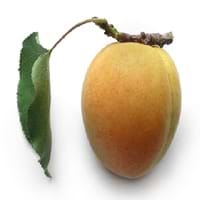Health Benefits
Cancer prevention, Improves eye vision, Prevents diabetes, Prevents high blood pressure
Asthma treatment, Cancer prevention, Controls blood pressure, Digestive aid, Heart care, Maintains hormonal balance, Regulation of heart rate, Skin cleansing, Skin rejuvenation
General Benefits
Cures inflamed tonsils, Helps in weight loss, Maintains healthy cholesterol level
Boosts immune system, Controls blood pressure, Digestive aid, Eye care, Maintains healthy cholesterol level, Strengthens bones
Skin Benefits
Anti-aging benefits, Protects skin from oxidative stress
Hydrates skin, Reduces wrinkles, Treatment of dark spots, Treatment of skin diseases
Hair Benefits
Protects hair
Good conditioner, Regulates hair growth, Rejuvenates scalp, Softening mask, Treatment of dandruff
Allergy Symptoms
Anaphylaxis, Coughing, Diarrhea, Eczema, Hives, Itching sensation in throat, Nausea, Skin Rashes, Runny nose, Sneezing, Swelling of mouth, tongue or lips, Vomiting, Wheezing
Abdominal cramps, Anaphylaxis, Breathing difficulty, Diarrhea, Itching of mouth, Itching sensation in throat, Swelling of mouth, tongue or lips, Vomiting, Wheezing
Side Effects
Heart burn
Dizziness, Headache, Nausea, Vomiting
Best Time to Eat
Along with meal, As a snack in the late afternoon, Don't consume at night and before bed, Don't eat after meal, Morning time (before lunch)
Best if taken as a breakfast (or empty stomach), As a snack in the late afternoon, Don't consume at night and before bed, Eat the fresh ones, avoid mixing with any other foods, don't eat after meal.
Vitamin B5 (Pantothenic Acid)
Vitamin C (Ascorbic Acid)
Vitamin K (Phyllochinone)
Calories in Fresh Fruit with Peel
Not Available
Calories in Fresh Fruit without Peel
Not Available
Calories in Frozen Form
Not Available
Not Available
Type
Fruit vegetable
Tree fruit
Season
All seasons
Summer
Varieties
Tamarillo bold gold, Tamarillo red beau, Tamarillo tango and Tamarillo teds red
Gold Cot, Tilton, Wenatchee, Goldbar, Gold Kist, Tomcot, Harcot, Brittany Gold, Harglow, Hunza, Moorpark, Patterson and Royal Rosa
Color
Orange, Red, Yellow
Orange, Yellowish-orange
Inside Color
Creamy Yellow
Yellow
Taste
Tangy, Tart
Smooth, Sweet
Origin
South Africa
China
Soil Type
Sandy loam, Well-drained
Well-drained
Climatic Conditions
Rainfall, Warm
Dry, Hot
Facts about
- Up until 1967, tamarillos were referred to as tree tomatoes.
- The name tamarillo is derived from Maori word 'tama' which means leadership and rillo from spanish word 'amarillo' which means yellow.
- 9 Jan is considered as the National Apricot Day.
- Apricots have been around for more than 4000 yrs.
- In latin, the meaning of apricot is 'precious'.
- 95% of apricots in the US are produced by California.
Top Producer
New Zealand
Turkey
Other Countries
Australia, Chile, Colombia, Malaysia, Peru, Philippines
Algeria, Egypt, France, Iran, Italy, Morocco, Pakistan, Spain, Uzbekistan
Top Importer
United States of America
United States of America
Top Exporter
New Zealand
France
Botanical Name
Solanum betaceum
Prunus armeniaca
Synonym
tree tomato, genus Cyphomandra, Cyphomandra
Not Available
Subkingdom
Tracheobionta
Tracheobionta
Division
Magnoliophyta
Magnoliophyta
Class
Magnoliopsida
Magnoliopsida
Subclass
Asteridae
Rosidae
Family
Solanaceae
Rosaceae
Species
Solanum betaceum
P. armeniaca
Generic Group
Nightshade
Rose
Difference Between Tamarillo and Apricot
We might think that Tamarillo and Apricot are similar with respect to nutritional value and health benefits. But the nutrient content of both fruits is different. Tamarillo and Apricot Facts such as their taste, shape, color, and size are also distinct. The difference between Tamarillo and Apricot is explained here.
The amount of calories in 100 gm of fresh Tamarillo and Apricot with peel is Not Available and 48.00 kcal and the amount of calories without peel is 31.00 kcal and Not Available respectively. Thus, Tamarillo and Apricot belong to Low Calorie Fruits and Low Calorie Fruits category.These fruits might or might not differ with respect to their scientific classification. The order of Tamarillo and Apricot is Solanales and Rosales respectively. Tamarillo belongs to Solanaceae family and Apricot belongs to Rosaceae family. Tamarillo belongs to Solanum genus of Solanum betaceum species and Apricot belongs to Prunus genus of P. armeniaca species. Beings plants, both fruits belong to Plantae Kingdom.









